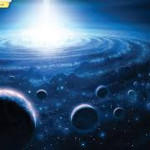Created by: david105722
Number of Blossarys: 3
The two points at which the Sun crosses the celestial equator in its yearly path in the sky. The equinoxes occur on or near March 21 and September 22. The equinoxes signal the start of the Spring ...
A celestial body orbiting the Sun that is massive enough to be rounded by its own gravity but has not cleared its neighboring region of planetesimals and is not a satellite. It has to have sufficient ...
The apparent change in wavelength of sound or light emitted by an object in relation to an observer's position. An object approaching the observer will have a shorter wavelength (blue) while an ...
The collapsed core of a massive star. Stars that are very massive will collapse under their own gravity when their fuel is exhausted. The collapse continues until all matter is crushed out of ...
A glow in a planet's ionosphere caused by the interaction between the planet's magnetic field and charged particles from the Sun. This phenomenon is known as the Aurora Borealis in the Earth's ...
A layer of gases surrounding a planet, moon, or star. The Earth's atmosphere is 120 miles thick and is composed mainly of nitrogen, oxygen, carbon dioxide, and a few other trace gases.
The temperature at which the motion of all atoms and molecules stops and no heat is given off. Absolute zero is reached at 0 degrees Kelvin or -273.16 degrees Celsius.


 Spanish (ES)
Spanish (ES)